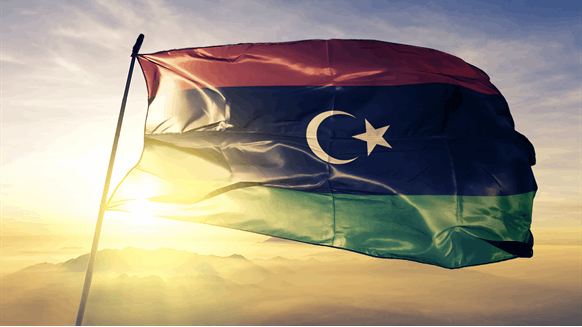Libya’s oil revenue, excluding royalties and fuel sales, fell to around $7 billion (LYD 33.4 billion) in the first half of 2023 year-on-year, according to official data.
The North African country, whose oil reserves are among the continent’s largest, collected nearly $8 billion (LYD 37.3 billion) in oil revenue excluding royalties and fuel sales during the same period last year.
In May, the National Oil Corp. (NOC) briefly shut down the Mellitah oil and gas complex. The facility has a daily capacity of 695 million standard cubic feet of gas and 31,000 barrels of liquids. It can also produce up to 450 tonnes of solid sulphur, according to operator Mellitah Oil & Gas BV, a 50-50 joint venture between NOC and Eni SPA.
Libya’s state oil company said on May 1 it was temporarily shutting down the integrated processing complex for renovation. On May 17, the CON announced the restart of the facilities.
A gas well in the Bahr Essalam field in the complex had just resumed operation after being shut down in January 2021 “due to technical issues,” as the NOC announced on April 9. The CW04 gas well can produce up to 37 million cubic feet of gas per day, according to the owner.
But Libya’s fossil fuel production received a boost with the commissioning of the Erawen oil field on March 29 at a rate of 3,000 barrels per day (bpd) and the Ras Lanuf industrial complex on May 12, according to the NOC.
However, gross revenue from oil royalties also fell between January and June 2023 to about $977 million (LYD 4.7 billion) from more than $1 billion (LYD 6.4 billion) in January and June 2022, the central bank recently reported. Libya recorded an increase of more than $353 million (LYD 1.7 billion) in oil royalties between May 2023 and June 2023.
The Central Bank of Libya recorded more than $10 billion (LYD 49.5 billion) in total revenue in the last review period, including residual oil royalties from previous years.
Oil accounted for about $22 billion (LYD 105.5 billion) or about 78.5 percent of Libya’s total public revenue of about $28 billion (LYD 134.4 billion) last year, including oil royalties remaining from previous years, according to the state bank. The oil revenue figure excluded approximately $3 billion (LYD 13.6 billion) in oil royalties and about $55 million (LYD 265 million) in domestic fuel sales.
Tax revenue contributed around $291 million (LYD 1.4 billion) to last year’s revenue to be the largest non-oil component of the economy.
Expansion of production
The NOC aims to increase production to two million bpd, it said announcing its approved plan for 2023-27 on March 30.
Earlier this year, the NOC and Italian global energy giant Eni signed an agreement to invest about $8 billion in “a strategic project aimed at increasing gas production to supply Libya’s domestic market and ensure the export to Europe”, as stated in an Eni. announcement on January 28. Targeted to become operational in 2026, the project has two structures with a combined gas production of up to 750 million standard cubic feet of gas per day.
On March 27, the NOC announced the signing of an agreement with US UOP Honeywell for the front-end engineering design of its southern refinery. “The refinery will start operating in the south in 36 months,” NOC President and CEO Farhat Bengdara said in a press release. “Through our contract with Honeywell UOP, we seek to increase the production capacity of the Zawia refineries and find suitable and available solutions for the Ras Lanuf refinery.”
On 11 May the NOC announced an oil discovery in block 4 of the Ghadames basin. The exploration success in the wild F1-82/04 well, about 205 miles south of Tripoli, is the third discovery in contract area 82, where the Libyan state has an 89.5% stake and Russia’s Tatneft PJSC has an operating stake of 10.5%. “The achieved flow rate is 1,870 BOPD [barrels of oil per day] of Devonian and Ordovician sandstones due to a certain amount of suffocation according to Libyan legislation”, said the CON.
To contact the author, please email jov.onsat@rigzone.com


